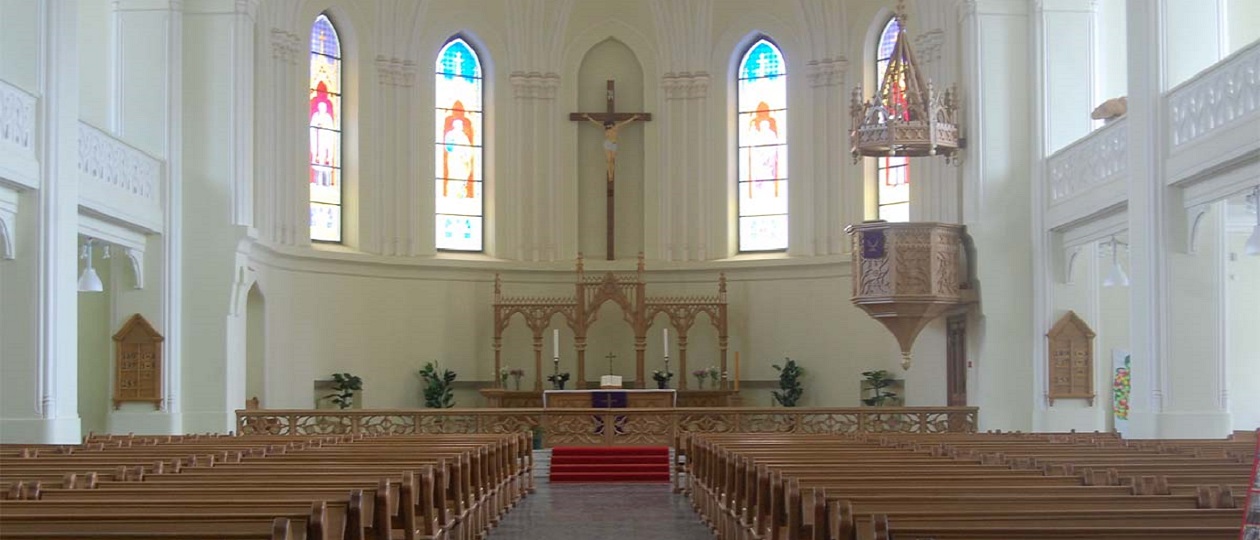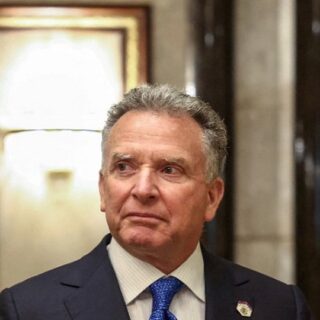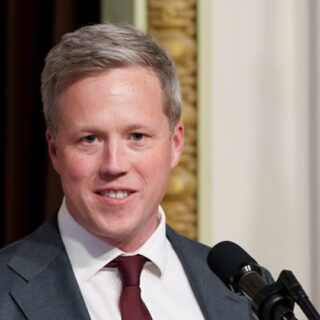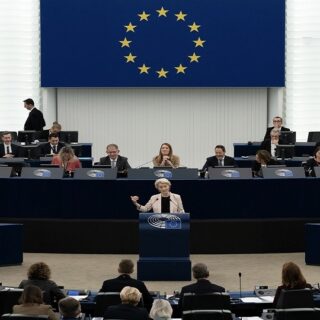
Fifteen years of pastoral ministry have taught me a simple truth: being a Lutheran in Russia means constantly answering the question of what Russian Lutheranism is. There is no answer—there are six different answers, six paths that seem to lead to the same goal.
The history of this diversity goes back centuries. The first Lutheran communities appeared in Russia as early as the 16th century, during the reign of Ivan the Terrible, although the very first Lutherans arrived in Russia at the end of the reign of Vasily III (1505–1533). These were doctors, pharmacists, artisans, and merchants from German lands. Beginning with the reign of Peter the Great (1682–1725), Lutherans, among whom were outstanding engineers, military personnel, and cultural figures, actively built factories in the Urals, served in the Russian army, and even founded the first court theater. They made great discoveries in geography and other fields—effectively becoming an integral part of the development of the Russian Empire.
Introduction. Empire, Terror, and Rebirth
In 1832, under Emperor Nicholas I (1825–1855), Russian Lutheranism gained state status. The scattered congregations were united into the Evangelical Lutheran Church (ELC) in Russia, with a single charter. The emperor formally became the head of the church, but the charter guaranteed non-interference by secular authorities in religious affairs. This was a golden age—churches from St. Petersburg to Vladivostok, the University of Dorpat, consistories, and extensive social work (schools, hospitals, and shelters). In 1917, there were 3,674,000 Lutherans in the country.
Everything came to an end in the 20th century. During the Soviet era, virtually all pastors were physically killed. By 1938, organized church life had ceased. What began in the 1990s (and in fact, back in the 1980s) was not just a restoration, but a rebirth from the ashes—a difficult, painful process.
1. ELC: the heir to the empire with a German accent
The Evangelical Lutheran Church in Russia is the direct successor to the historical church structure. It is one of two jurisdictions that have retained a fully fledged episcopal structure with an archbishop (Vladimir Provorov) at its helm. Historically, the church has received significant support from the Evangelical Church in Germany (EKD), which has contributed significantly to the restoration of its parishes and personnel. Services are held in Russian with elements of German, as a tribute to tradition and respect for history. Its distinctive position is noteworthy: the ELKR ordains women as pastors. For some, this is an example of Christian openness; for others, it is a concession to the spirit of the times.
2. ELCI—Church of Ingria: the Finnish soul of Russian Lutheranism
The history of the Church of Ingria (ELCI) is believed to have begun in 1611 with the founding of the first parishes in Ingria (as a result of the Great Northern War of 1700–1721, Ingria became part of the Russian Empire. Previously, it was Swedish territory). The ELCI was re-established and registered in 1992. Parishes exist throughout Russia, and services are primarily held in Russian, with exceptions (Finnish, etc.). Led by Bishop Ivan Laptev, the church demonstrates a remarkable balance: while maintaining a conservative stance on ordination, it is simultaneously a member of two international associations (the World Lutheran Federation (WLF) and the International Lutheran Council (ILC). At various stages of its development, the church, like the SELC, received support from the conservative Missouri Synod. The ELC and ELCI actively collaborate on socially significant projects, despite differences in theological nuances and practices. ELCI is considering changing its name to RELTS or RLC (Russian Lutheran Church).
3. ELCAI: Continuity and Freedom
The Evangelical Lutheran Church of the Augsburg Confession (registered in 2007) arose as a movement for fidelity to historical Lutheran confessional documents (the Augsburg Confession is one of the documents of the Book of Concord, a collection of Lutheran doctrinal texts). On the other hand, the ELCAI’s main goal was to unite communities of various traditions—from high-church to pietist—under its wing. The ELCAI is headed by Archbishop Alexander Franz. A significant event was the restoration of apostolic succession in 2015, received from the Old Catholics. The Moscow parish of St. Michael, within the ELCAI’s jurisdiction, considers itself the successor to the oldest Lutheran parish in Russia, founded in 1576. Financially, the ELCAI has developed quite independently. The church has experienced several crises, after which some communities remained, while others decided to join the Old Catholic Church. The priesthood and confessional status of the ELCAI is contested by other Lutheran churches.
4. Karelian Church (KELC): the voice of a small people
Karelia is a nature reserve of forests and lakes located in northwestern Russia, adjacent to Finland. The Karelian Evangelical Lutheran Church was founded in 1997 out of a desire to conduct services in both the Karelian and Russian languages. Its relationship with the Church of Ingria remains complex for various reasons. Receiving apostolic succession through the bishops of the ELCAI in 2015 strengthened the independence of this church, which, like the ELCAI, is developing primarily through internal resources. The church is headed by Bishop Alexander Kuznetsov.
5. ELC “Concord”: ultra-conservatism
Evangelical Lutheran The Concord Church grew out of the mission of the conservative Wisconsin Synod, which provided it with significant support in its early days. Unlike other jurisdictions, it lacks an episcopal structure—the church is pastorally led. It embraces a strict, uncompromising Lutheranism focused on internal piety. In 1996, the church was registered and joined the International Confessional Evangelical Lutheran Conference (CELC), a body of more conservative Lutheran churches worldwide. Its main center is in Siberia. Currently, the church has four parishes (Novosibirsk, Berdsk, Tomsk, and Sevastopol), and several Russian pastors serve there.
6. SELC: Siberian independence
The Siberian Evangelical Lutheran Church, founded in 1992, has parishes primarily in Siberia. In May 2003, the Church received autocephaly from the Estonian Evangelical Lutheran Church. Although the parishes were canonically part of the EELC, they were never “ethnic” parishes. Services are held in Russian, and the EELC is currently demonstrating a growing rapprochement with the Church of Ingria. They are united not only by a similar structure with a single bishop, but also by the fact that at various stages both churches received support from the conservative Missouri Synod. The church is headed by Bishop Vsevolod Lytkin. The church positions itself as a high church.
Conclusion. Unity in Diversity and God’s Word
Six paths are six answers to the challenges of the times, six ways to be a Lutheran in Russia.
These are, one might say, six fragments of the very Lutheranism that existed before the 1917 Revolution. Some fragments do not recognize each other, some are larger, others are tiny. But all are important, and following Jesus’ prayer in John 17—”that they all may be one”—we are called, sooner or later, to unite in a single teaching, acknowledge our weaknesses and mistakes, and reach out to each other. Whether this will happen or whether each will go their own way is unknown. In any case, multiple paths are a wonderful thing. After all, when there is a choice, everyone can follow the path that resonates in their hearts.
Should we mend the chalice, or is it easier to create a new one? The very efforts of Russian Lutherans to achieve unity in various areas—from social work to education—demonstrate the possibility of unity in a single doctrine. The complex issue of recognizing the Lutheran identity of a particular church remains unresolved, but perhaps it is a matter of time and effort to accept one another and address shortcomings in their religious practices, understandings, and distortions in their confessions.
After the Soviet night, everyone sought support and followed their own path to the light. Today I understand: our strength lies not in administrative unity or funding sources, but in the unity of faith. We all profess the Augsburg Confession. We all believe that grace cannot be earned. Of course, there is room for growth, and this is a long process, perhaps a lifetime one.
The history of Russian Lutheranism continues. And its greatest wisdom is that different paths can lead to the same goal.





